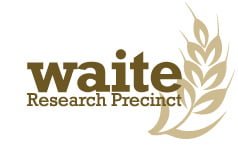University of Adelaide researchers are helping humanity explore among the stars by developing off-Earth agriculture and––in the process––finding interstellar solutions that could transform plant cultivation here at home.

Climate change is a pressing global concern. Greenhouse gas emissions continue to rise, escalating extreme weather events and threatening Earth’s ecosystem as we know it. Agriculture, one of Australia’s biggest industries, is a significant contributor to these environment-altering pollutants; the food system is a major source of environmental contamination worldwide.
Fortunately, help is on its way, and it’s coming from an unexpected source: space. University of Adelaide researchers are leading the charge in developing zero-waste plants that can grow in space, and their discoveries are likely to transform our sustainable agriculture practices back on Earth.
The University of Adelaide is the lead organisation supporting Plants for Space (P4S), an Australian Research Council Centre of Excellence that has big goals.
“P4S is reimagining plant design to enable off-Earth habitation,” said University of Adelaide Professor Matthew Gilliham, Director of P4S and 2024 SA Science Excellence and Innovation Awards finalist. “Our plant-based solutions will support human physical and psychological wellbeing during deep space travel and settlement.”
P4S is working with NASA to develop the nutrition solutions and on-demand bioproduction required to support NASA’s plans for a permanent human presence on the Moon. The lunar base will be used as a jumping off point for exploratory missions to Mars and, possibly, beyond. But, for astronauts to go further than ever before, they will need to remain healthy in space for longer than ever before.
Currently, astronauts in the International Space Station (ISS) rely on prepackaged food and fresh produce delivered from resupply vehicles. However, the ISS is only 400 kilometres away from Earth––close compared to Mars, which is 100 million kilometres away. This distance makes resupplies difficult, and any food brought from Earth would rot or lose nutrition over time, so astronauts need fortifying food they can grow in space.
PS4 is developing new plant-growing technology in laboratory conditions to overcome the challenges and constraints involved in growing crops in space. The centre is also developing novel food crops such as duckweed; a plant that’s healthy, quick to grow, and minimal in waste––making it perfect for cosmic conditions. The eventual goal for space exploration is to establish permanent plant-growing platforms which will allow astronauts to nourish themselves over the long-term with revolutionary space plants.
“The plants grown in the experimental space platforms will be ‘complete nutrition’ varieties that humans can survive on for the duration of longer space exploration missions,” Prof Gilliham said.

In addition to making breakthroughs in Moon-based agriculture, the centre will continue the long tradition in which space research leads to earthly innovations. Previous cosmically focussed discoveries have included unexpected inventions that benefit our everyday lives, from air and water filters, LED lights for plant growth, to solar panels. Prof Gilliham sees great potential for P4S’ work to prompt advancements in controlled-environment agriculture, which is important in the climate change fight because it’s less resource-intensive than other crop-growing methods.
“Living in space intensifies the complex sustainability challenges we already face in producing food and biomaterials on Earth,” he said. “Our controlled-environment agriculture work will help us find solutions to Earth’s common challenges such as drought, heat, flood, and saline soils.”
“P4S breakthroughs will not only deliver crucial improvements in plant efficiency, productivity, and processing technologies in space––but also here on Earth.”
P4S is a global collaboration that brings together 38 entities from across academic, private, government and technology spheres. Member organisations include NASA, the Australian Space Agency (ASA), the German Space Agency, the Universities of California, Cambridge, Wisconsin and Nottingham, and four Australian university partners.
What’s next?
The first steps towards a human-habitable lunar base that will enable further deep space exploration are due to be taken in 2025, when NASA’s Artemis III mission is slated to land astronauts on the Moon for the first time since 1972.
With the help of the University of Adelaide and P4S, NASA’s subsequent Artemis missions will allow us to explore more of the Moon than ever before, teach us how to live and work away from home, and prepare us for future human exploration of Mars. As previous space-related innovations like Velcro, solar panels, and camera phones have proven, these great leaps across the universe are also likely to foster untold great leaps forward for those of us still living Earth-bound lives.
